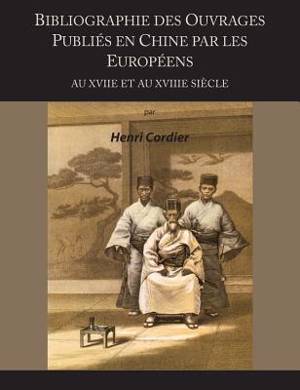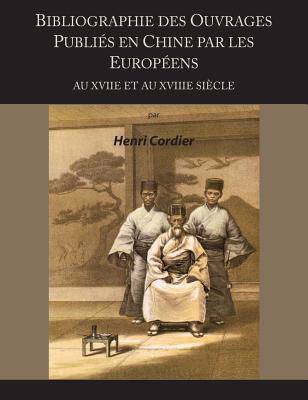
- Afhalen na 1 uur in een winkel met voorraad
- Gratis thuislevering in België vanaf € 30
- Ruim aanbod met 7 miljoen producten
- Afhalen na 1 uur in een winkel met voorraad
- Gratis thuislevering in België vanaf € 30
- Ruim aanbod met 7 miljoen producten
Zoeken
Bibliographie Des Ouvrages Publies En Chine Par Les Europeens Au Xviie Et Au Xviiie Siecle
Henri Cordier
Hardcover | Engels
€ 82,45
+ 164 punten
Omschrijving
2014 Reprint of 1901 Edition. Full facsimile of the original edition. Not reproduced with Optical Recognition Software. Cordier describes 196 published by Europeans in China from the 17th to the 18th century. This would include all the early missionary works. The Society of Jesus (Jesuits), with Matteo Ricci as its chief representative, entered China in 1583 from its base in the Portuguese colony of Macao. The strategy of Ricci and his colleagues was to identify with the Chinese elite, who would in turn, they felt, influence the rest of China. The Jesuits dressed like Confucian scholars-the top of the social hierarchy. They avoided any criticism of Confucius, the patron saint of the scholars, and observed all appropriate amenities when visiting the literati. They prepared maps, practiced astronomy, constructed and repaired clocks they gave to the emperor, and they wrote treatises that explained Christianity in terms of a Confucian world-view. The missionaries needed to be deliberately ostentatious about their learning to convince the Chinese of their expertise in European learning, so they would emboss their European books with gold covers. In all 196 works are described, with notes. This catalogue is quite scarce.
Specificaties
Betrokkenen
- Auteur(s):
- Uitgeverij:
Inhoud
- Aantal bladzijden:
- 90
- Taal:
- Engels
Eigenschappen
- Productcode (EAN):
- 9781578983735
- Verschijningsdatum:
- 23/06/2014
- Uitvoering:
- Hardcover
- Formaat:
- Genaaid
- Afmetingen:
- 190 mm x 235 mm
- Gewicht:
- 376 g

Alleen bij Standaard Boekhandel
+ 164 punten op je klantenkaart van Standaard Boekhandel
Beoordelingen
We publiceren alleen reviews die voldoen aan de voorwaarden voor reviews. Bekijk onze voorwaarden voor reviews.








